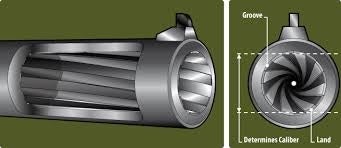Understanding the Basics of Rate of Twist
Dr. John Woods 10.13.15

Putting a spin on things is a common reference these days. Putting a spin on a bullet sailing down a rifled barrel is essential to accurate shooting. Though we certainly expect that firearms manufacturers are building their barrels with the optimal or ideal rates of twist for the intended bullets of choice, these rates do vary even in the same models of rifles.
Rate of twist is something we need to have general knowledge about. It’s not really a life threatening science, but as shooters we ought to understand the principles involved. Whatever rifles we shoot, we want to maximize accuracy with the bullets we choose.
A barrel’s rifling is the basis for the rate of twist engineered into any particular barrel. Rifling is the helical grooves cut into the barrel. These “curves” impart a spin on the bullet as it moves down the barrel. This spin gyroscopically stabilizes the bullet, which in turn (no pun intended) initiates the bullet’s aerodynamic stability and inherent accuracy.
Technically each specific bullet type/weight/confirmation performs best when the ideal rate of twist matches the design and dimensional characteristics of that bullet. Certainly we may be splitting hairs when, for example, we expect a typical 30-06 to shoot a 150 grain bullet just about as well as a 180 grain projectile. For hunting purposes, “all” rifles perform well enough in terms of field accuracy despite the bullet used. It is just that some rifles shoot better than others for a host of reasons.
It is assumed then that the manufacturers’ engineers and ballistics experts determine which rates of twists are best for the most common ammunition to be used. Let’s look at the 5.56/.223 in the AR-15 shooting 55 grain bullets as an example. Most barrels will be stamped with the rates of twist so the buyers can determine if that is the rate they want their rifle to have.
However, you will find ARs in .223/5.56 with rates of twist of 1 in 7-inches to fire NATO SS109 Ball ammo, while general consumer AR rifles have a 1 in 12 twist, though newer rifles may have a 1 in 9 twist. So, before you buy an AR rifle, know the rate of twist if it is something that concerns you. You can sleep well tonight though, because gunmakers are doing it right.